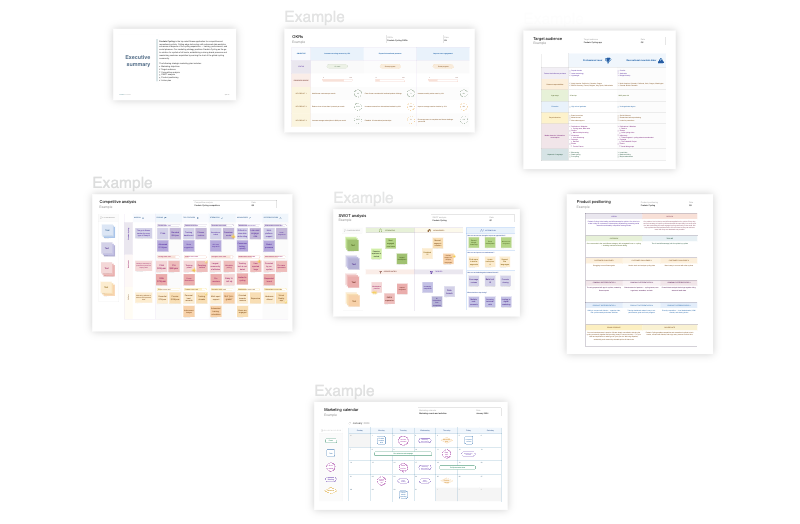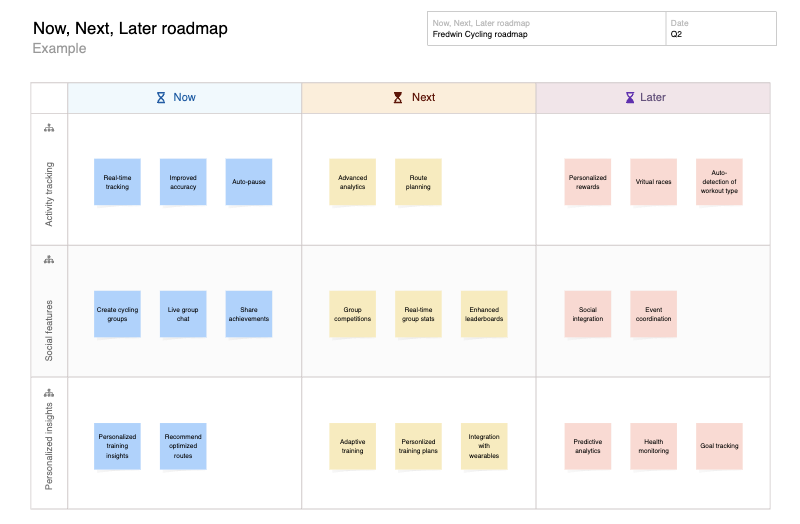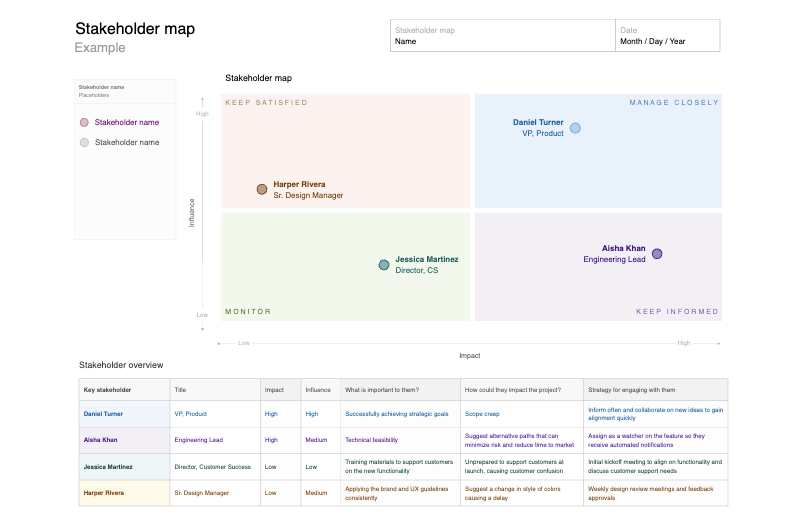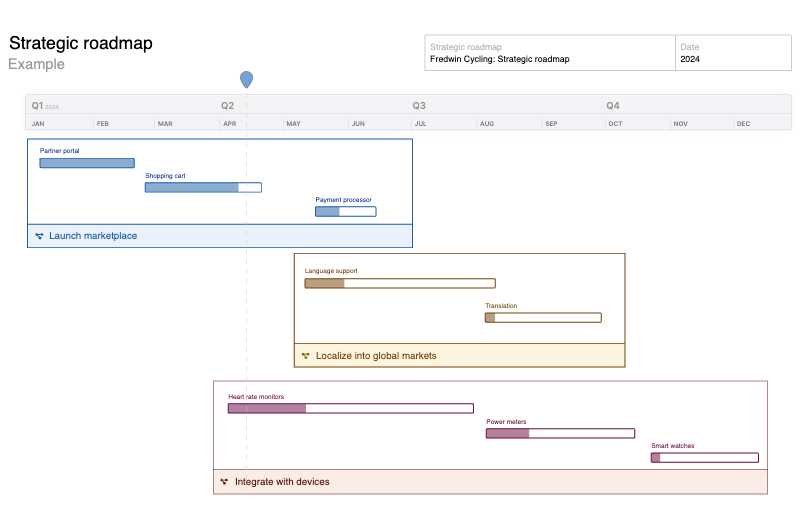Stakeholder analysis template
Clarify roles and responsibilities to drive effective stakeholder engagement
Use template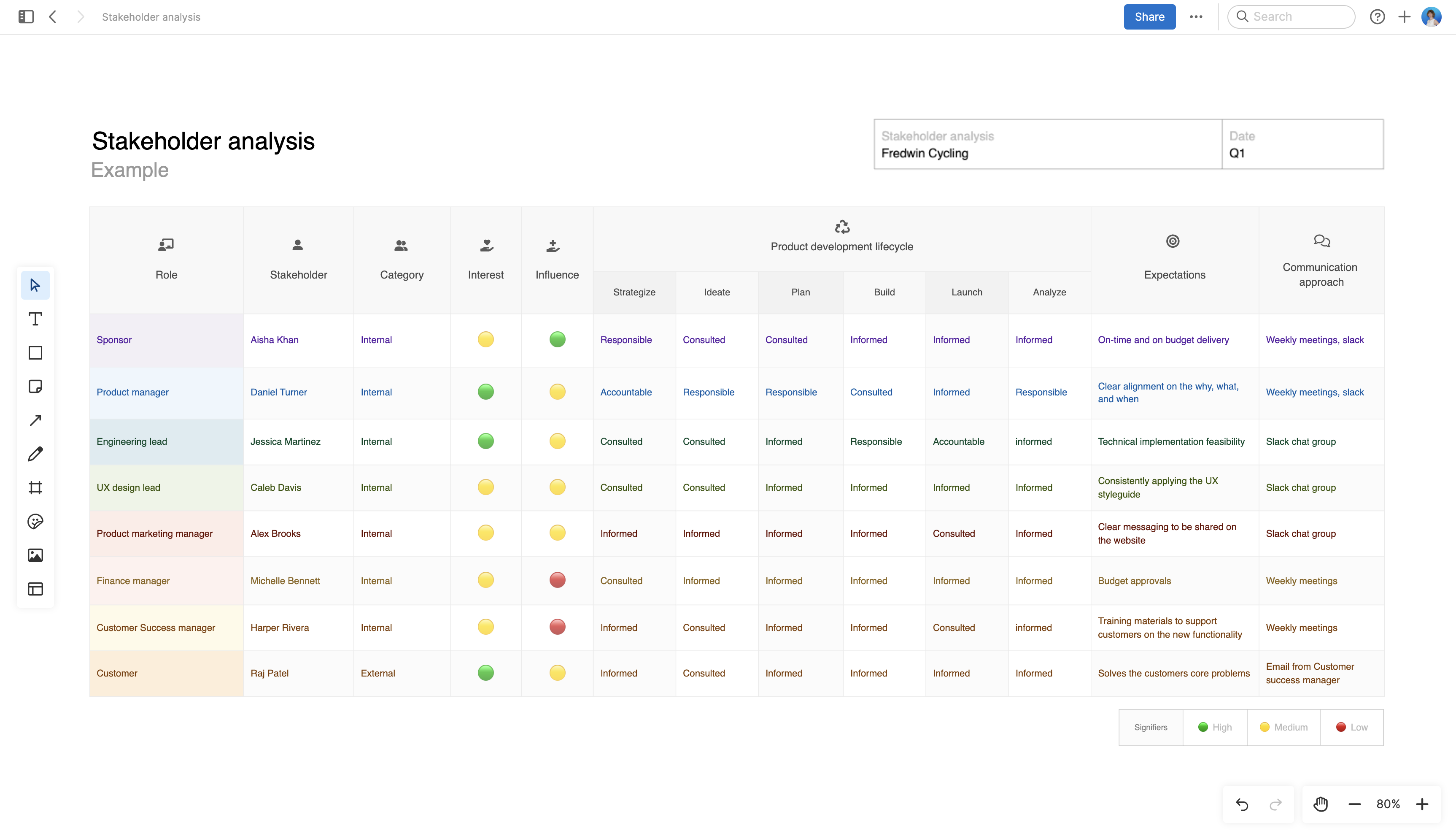
About the stakeholder analysis template
Managing a complex initiative means coordinating input from many stakeholders, each with different priorities and perspectives. The stakeholder analysis template helps you define roles, set expectations, and map out communication needs for everyone involved in your product plans. With a flexible table layout, you can plan how to involve each person and track outreach — making it easier to execute your engagement strategy and keep teams aligned from kickoff through delivery.
Included in the stakeholder analysis template
This stakeholder analysis template includes built-in capabilities such as:
A structured table to list stakeholders and their roles, influence, and engagement needs
Color-coding to highlight communication strategies and priority levels
Built-in whiteboard tools (shapes, sticky notes, and emojis) for flexible planning
Inline comments for collecting feedback and collaborating in real time
Quick access to best practices and a pre-filled example for guidance
How to use the stakeholder analysis template
Use this template at the outset of any major product work — such as a strategic pivot, feature launch, or process change — when you need to ensure the right people are involved and informed. Begin by listing each stakeholder and noting their name, role, and whether they are internal or external to your organization. Then, assess and record their levels of interest in the project and the degree of influence they have over outcomes.
Capture how and when each stakeholder should be engaged throughout the product lifecycle. Specify their preferred communication methods and any expectations or key concerns, drawing from past interactions or known priorities. Use color-coding to highlight stakeholders who require frequent updates or special attention, and leverage built-in sticky notes or inline comments to document feedback and discussion points as you gather input from the team.
As your work progresses, revisit the table on a regular basis — particularly after major planning milestones, leadership changes, or identification of new stakeholders. Teams using Aha! Roadmaps can link this whiteboard directly to related records, feature ideas, or launch plans to provide context and maintain visibility across broader product plans. Keeping this analysis current will help you anticipate needs, avoid miscommunication, and build lasting alignment with everyone involved.
Best practices
Move from analysis to intentional, effective stakeholder management.
Prioritize engagement where it matters: Focus your energy on stakeholders with the most influence or interest, and assign owners for high-priority relationships to ensure consistent communication.
Anticipate challenges early: Identify potential sources of friction (such as conflicting goals or lengthy approval cycles) and plan ways to address them before they become blockers.
Document real expectations: Capture concrete feedback and specific preferences for each stakeholder — avoid generic descriptions that do not inform your outreach.
Integrate with your workflow: Tag stakeholders in product records, reference them in planning documents, or invite them to key meetings to keep engagement visible and actionable.
Update as you go: After major reviews or team changes, revisit your stakeholder table to ensure it still reflects current dynamics and needs.
FAQs about the stakeholder analysis template
Why is stakeholder analysis important?
Stakeholder analysis helps you map not just who is involved, but how their priorities, influence, and communication preferences can impact your product's success. By understanding these dynamics up front, you can anticipate resistance, tailor your approach to each group or leader, and avoid costly missteps later. This enables you to address concerns early and secure buy-in at each critical stage of development.
What are some best practices for doing stakeholder analysis?
Go beyond simple lists — document specific roles, recent feedback, decision-making power, and potential risks each stakeholder brings. Categorize stakeholders by both their level of influence and their stance (supporter, neutral, or blocker), and revisit these designations as your work advances. Use visual cues like color-coding to instantly spot high-priority individuals and track changes in engagement over time.
Who is the stakeholder analysis template for?
This template is designed for product managers, program leads, and cross-functional teams managing complex initiatives with multiple stakeholders. It is especially valuable for teams working on projects with regulatory, executive, or external dependencies — where alignment and clear communication are critical and stakeholder landscapes often shift.
Is this template free to use?
Yes. To use this stakeholder analysis template, sign up for a free 30-day trial of Aha! Whiteboards. (You can also try this template in Aha! Roadmaps if you need a complete product management solution.) Easily customize the template to suit your needs, then share it with as many people as you want (for free) to streamline collaboration.
